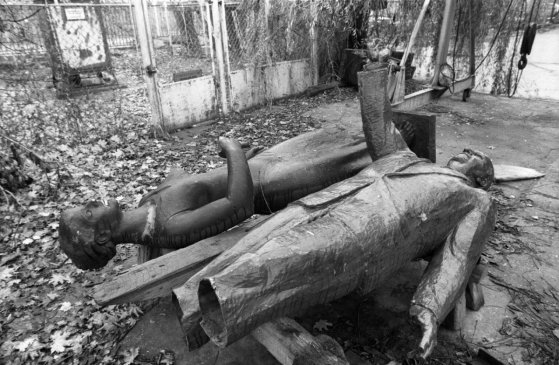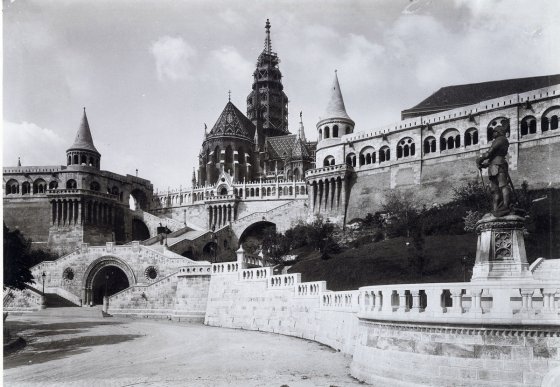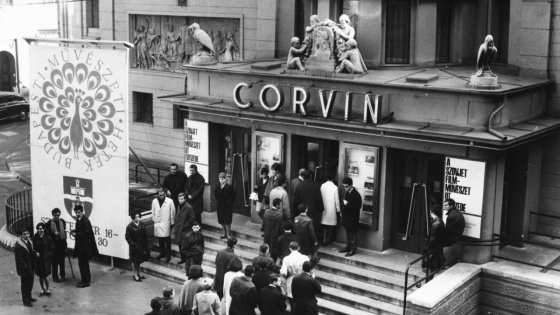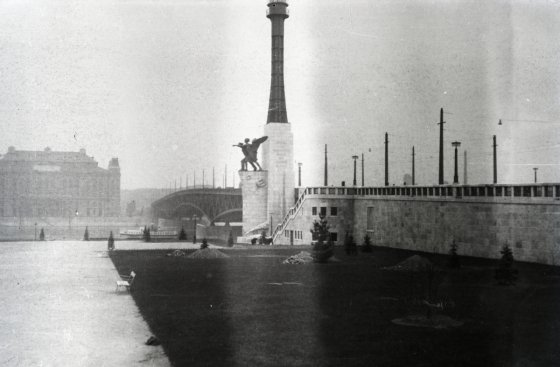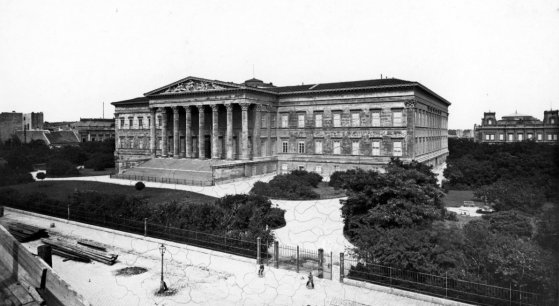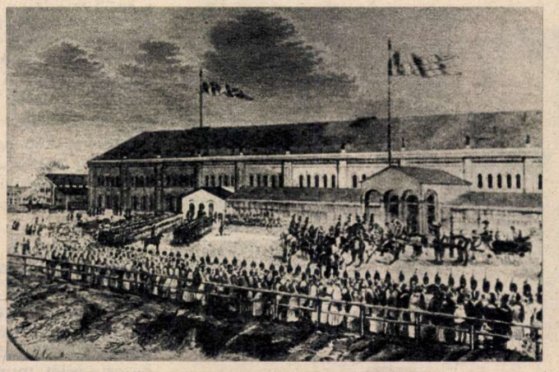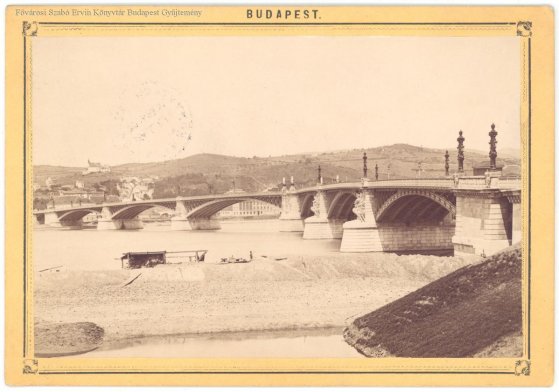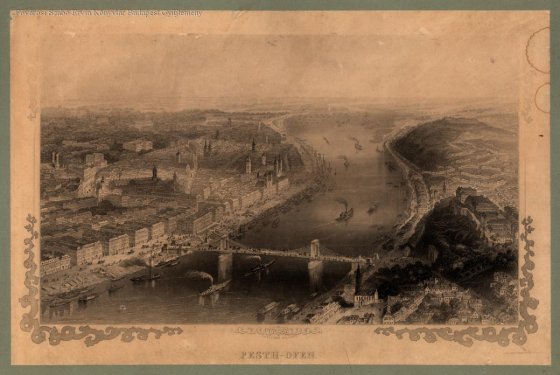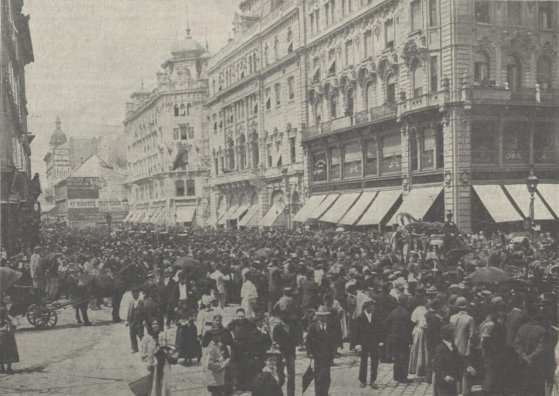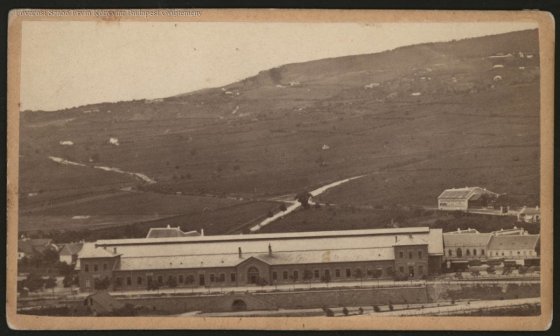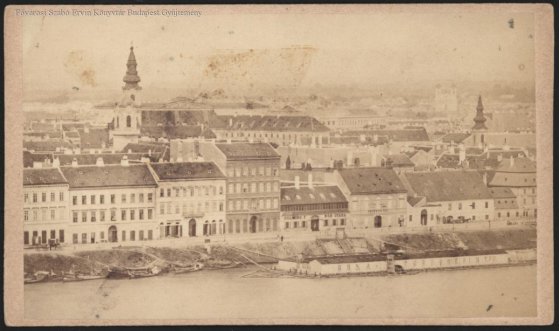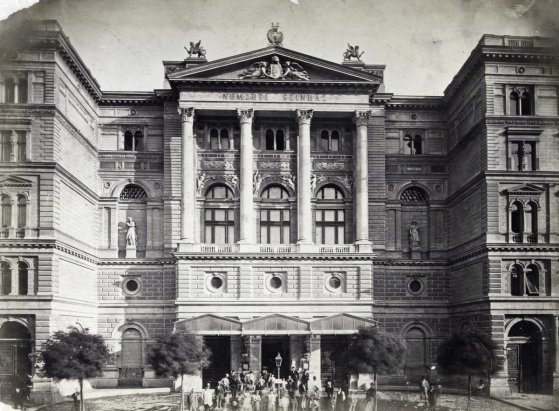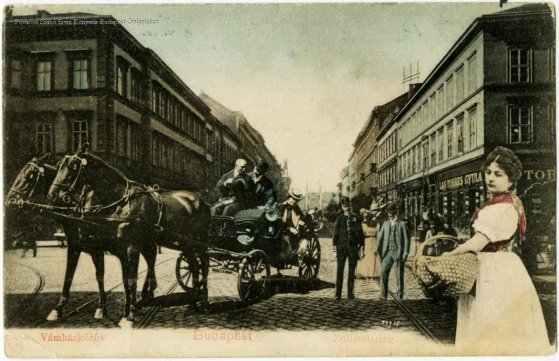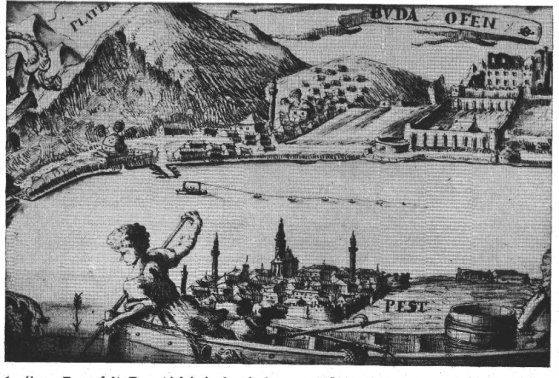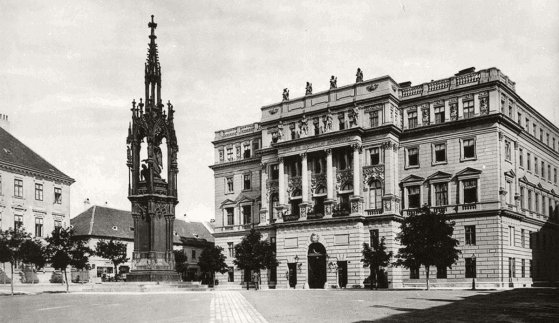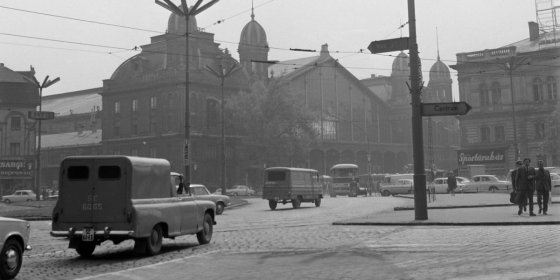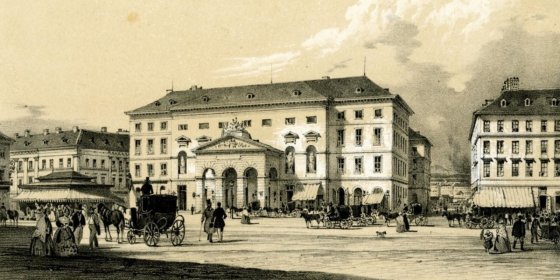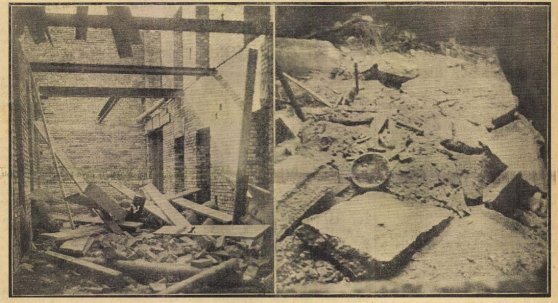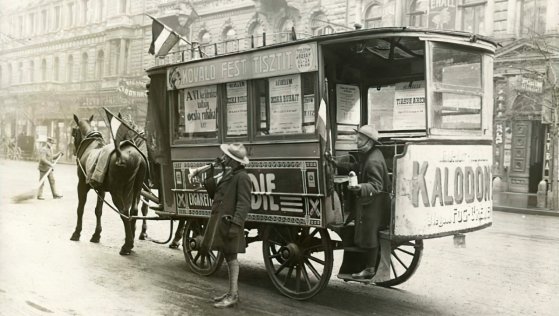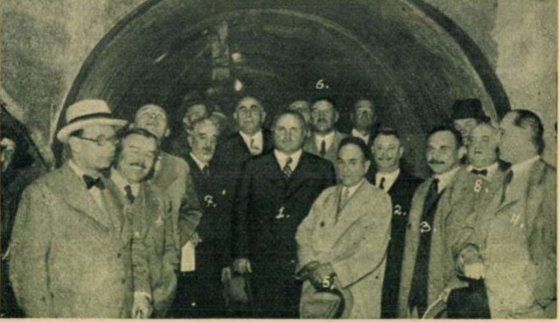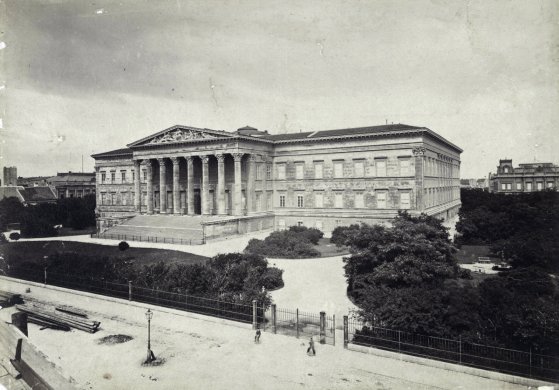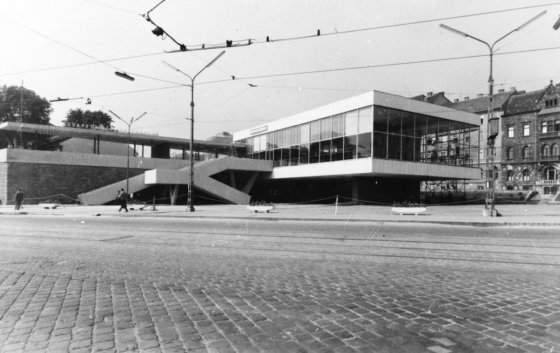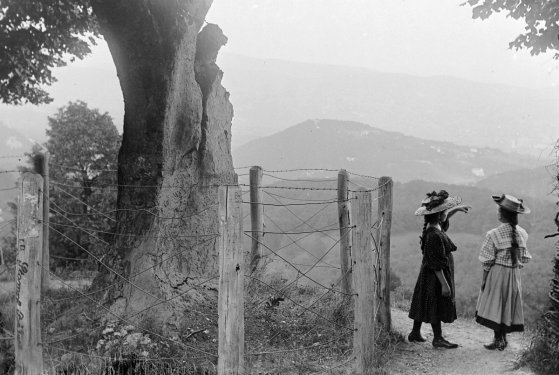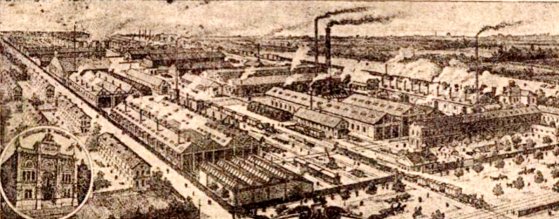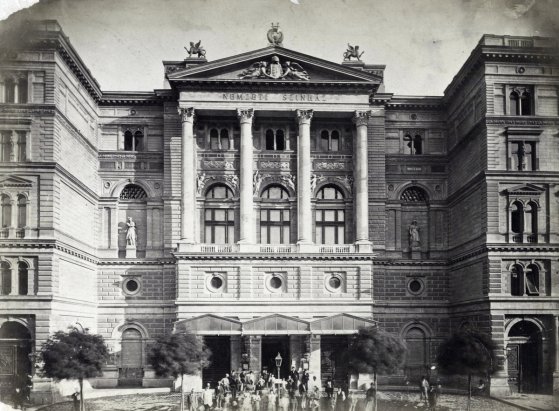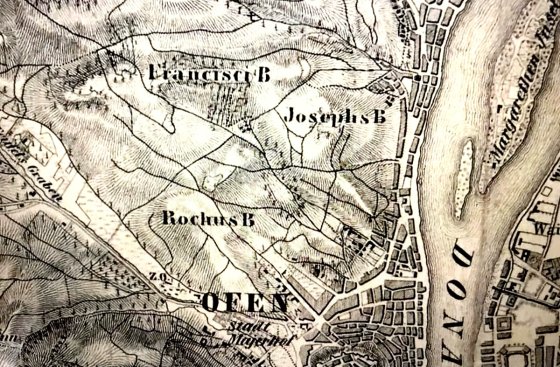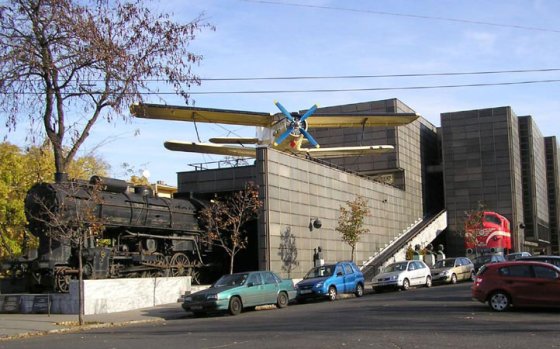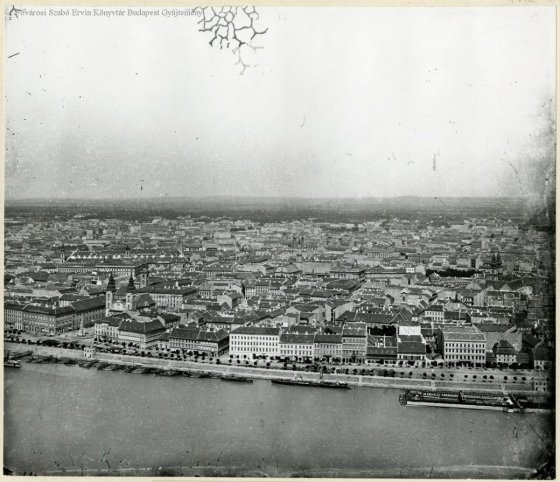 The „intertwined history” of the bridges and the city of Budapest
Which ideas and events have shaped the fate of bridges of Budapest and the cityscape? Alongside many other interesting facts, this question is also answered this newly published book by the Budapest City Archives, which introduces the history of bridges in Budapest.
The „intertwined history” of the bridges and the city of Budapest
Which ideas and events have shaped the fate of bridges of Budapest and the cityscape? Alongside many other interesting facts, this question is also answered this newly published book by the Budapest City Archives, which introduces the history of bridges in Budapest.
histories
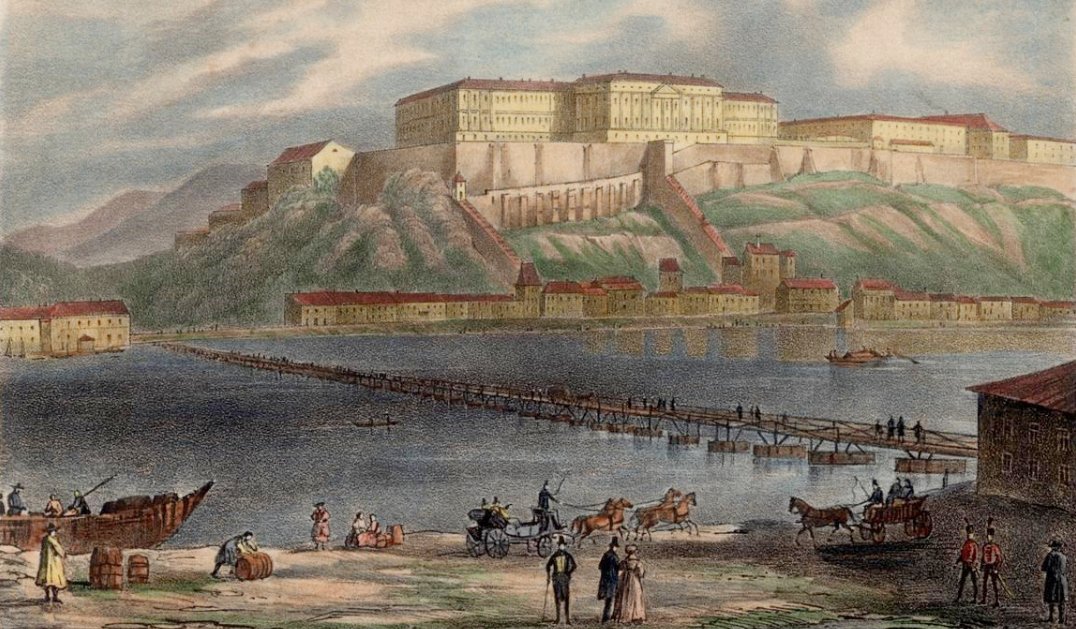 The city's development was helped by the pontoon bridge built 255 years ago between Pest and Buda
The city's development was helped by the pontoon bridge built 255 years ago between Pest and Buda
September 22, 2022 at 1:00 PM
For nearly 100 years, a pontoon bridge built 255 years ago provided a way for traffic between Pest and Buda. But the pontoon bridge, used since 1767, was moved twenty years later because a new city quarter was planned to be built north of the Pest city walls. The bridge served traffic in its new location until the opening of the Chain Bridge, i.e. until the end of 1849.
Monuments of the socialist era were dismantled 30 years ago
September 16, 2022 at 2:30 PM
Thirty years ago, the removal of statues associated with the previous regime from Budapest's public spaces began. The monuments erected during the socialist era, including the statues of Marx and Engels, Lenin, and Béla Kun, were transported to the sculpture park created in the 22nd District, where they can still be seen in an open-air exhibition ever since.
The predecessor of Open-Air Stage: The Park cinema opened a 100 years ago in Városmajor
September 14, 2022 at 5:00 PM
Over the past hundred years, a lot has changed in Városmajor, but culture and guaranteed entertainment have always been present and can still be found in the capital's first public park. The predecessor of the Városmajor Open-Air Stage, the open-air Park cinema, opened here more than a hundred years ago, but the fate of the park was also very interesting after that. In 1935, the well-known stage was built, which, along with its surroundings, has undergone continuous transformations over the past century, including recent times.
Skulls under the Fisherman's Bastion - The Forgotten St. Michael's Chapel
September 13, 2022 at 2:30 PM
In the last years of the 19th century, during the works before the foundation of the Fisherman's Bastion, a cavity hiding skulls emerged from the ground, which the architect Frigyes Schulek referred to as one of the Castle's old dungeons. But he could have guessed its original function because he deemed it worthy of preservation, but the place was then forgotten again, only to be found again in the middle of the 20th century: now the place has been identified as the medieval St. Michael's Chapel, which since 1997 has been one of the most interesting details of the Fisherman's Bastion.
The wide-screen cinema in Pest is 65 years old: Corvin presented a Soviet film
September 12, 2022 at 2:00 PM
Today, it is natural that the screen in the cinema is huge, it can be up to 24 metres wide and 18 metres high, and you can watch movies with surround sound or in 3D. In the 1950s, however, it was different in Hungary, the screens in the cinema were only a few metres wide. The first wide-screen cinema was Corvin, damaged during the revolution and rebuilt in 1957.
Horthy Miklós Bridge was built eighty-five years ago - After the post-war reconstruction, it became Petőfi Bridge
September 10, 2022 at 10:00 AM
The Petőfi Bridge is perhaps the least known bridge in inner city Budapest. It is not a spectacular creation, it is not photographed by visiting tourists, but still, from a traffic point of view, it is one of the most important crossings in the city. The bridge was handed over 85 years ago, on 12 September 1937, back then it was called Horthy Miklós Bridge.
He was called the cultural pope of dualism - Ferenc Pulszky died 125 years ago
September 9, 2022 at 10:30 AM
Ferenc Pulszky was the director of the Hungarian National Museum for a quarter of a century, and there he assisted the founding of other museums created during that period. But Ferenc Pulszky was much more than perhaps the most significant director of the Hungarian National Museum, he was the "culture pope" of dualism.
The railway line from Pest to Szolnok was opened 175 years ago
September 2, 2022 at 9:00 AM
In addition to travel from Pest to Vác by rail, it was made possible to reach Szolnok, as the new line was opened 175 years ago. This date is less well-known than 1846, which is known incorrectly as the opening of the first Hungarian railway but "only" the first steam-hauled railway line was opened then. The opening of the Szolnok line on 1 September 1847 was at least as important because of this, Pest's central role in trade strengthened.
The construction of the Margaret Bridge began before the city unification - piling began 150 years ago
August 1, 2022 at 9:00 AM
The Margaret Bridge was the second bridge between Pest and Buda, the construction of which began 150 years ago, on 1 August 1872, even before the unification of the city. Many people criticized the designated location, but the government decided that the new Danube crossing should connect to the planned Outer Ring Road and through it to the Sugárút [Avenue]. The bridge was designed by a French engineer and built by the French company he founded, and was completed in four years.
When the Turkish Sultan visited Pest and Buda
July 31, 2022 at 10:30 AM
The Turkish Sultan arrived in Pest-Buda in the summer of 1867. On the occasion of the one-day visit, the people of Pest organised a folk ceremony, welcoming the guest with 72 cannon shots. Pasha Abdul-Aziz stayed here for only a few hours, visited the the royal palace in the Castle, and his program even included a carriage ride in Pest, and then left in the same way as he arrived, by boat.
The first lord mayor of Budapest died 125 years ago
July 30, 2022 at 11:00 AM
Károly Ráth was the lord mayor of Budapest from the time of the unification of the city, in 1873, and he was re-elected a total of four times. He held this post in the quarter century when the Hungarian capital developed into a metropolis. He witnessed the construction of Andrássy Avenue and Outer Ring Road, and saw how Budapest's famous buildings, public institutions, schools, and hospitals were constructed. He even took part in the millennium celebrations and died as mayor 125 years ago, on 30 July 1897.
By train to Pest and Buda - Until the Compromise, only private railways operated in the country
July 28, 2022 at 9:00 AM
Today, it is natural to get on the train or plane and get anywhere in the world from Budapest. However, it was quite different a century and a half ago. Let's see where someone could travel from Pest or Buda by train 155 years ago, in the year of the Compromise!
The last year of Pest's independence - Only 34 four-story houses stood in the city before unification
July 22, 2022 at 11:00 AM
Three small towns stood on the banks of the Danube 150 years ago. The largest of the settlements was Pest on the left bank, which already had almost 5,700 buildings. Budapest existed only in plans and legislation, but Pest was constantly being built and developed. In 1872, the last independent year before the unification of the city, 206 new residential buildings were handed over, but the fact that 28 stables were also built in the same year clearly shows the way of life and transport options of the time.
A 190-year-old proposal to create a permanent Hungarian theatre
July 21, 2022 at 1:30 PM
The first permanent Hungarian-language theatre opened in Pest in August 1837, making a nearly 40-year-old dream come true. The construction of the theatre was given a big boost by a work five years earlier, which put a detailed and thorough proposal on the table on how to establish a Hungarian theatre and ensure its operation in the long term. Its creator was István Széchenyi, who already called the Hungarian capital Buda-pest in 1832.
When the coachmen were regulated in Budapest
July 16, 2022 at 2:00 PM
A smaller war broke out between the Budapest police headquarters and the coachmen 105 years ago, in 1917. Due to the many abuses and irregularities, the captain wanted to bring this type of transport service under the rules, for which the coachmen threatened to go on strike.
The reaction ferry between Pest and Buda ceased to exist 255 years ago - The current of the river operated the special ferry
July 14, 2022 at 10:30 AM
The first post-Turkish bridge was built between Buda and Pest 255 years ago, but until then, people still had to cross the river somehow. This was made possible by a very interesting structure called the reaction ferry. It was operated by the flow of the river, and it solved the crossing of the Danube in the line of today's Erzsébet Bridge and then the Chain Bridge until 1767.
A publicly hated monument in the Castle - The Hentzi "pillar of shame" was inaugurated 170 years ago
July 11, 2022 at 1:00 PM
There have been many monuments and buildings and there are ones still standing in Budapest that remind us of the former occupiers and glorify those who committed crimes against Hungarians. The largest of these is the Citadel, which was built by the Austrian army, specifically for the purpose of threatening the population of Pest and Buda. And a monument in Buda Castle was erected to a man who unjustifiably shot at the city of Pest and its citizens in 1849. The Hentzi Memorial was inaugurated exactly 170 years ago, on 11 July 1852, by Franz Joseph, who defeated the Hungarian war of independence.
Bridge over Marx Square - Fifty years ago, the environment of the Nyugati Railway Station was imagined this way
July 8, 2022 at 11:00 AM
The design competition for the arrangement of the area around the Nyugati railway station was closed a few months ago. In the new ideas, a more livable, greener railway station environment and Nyugati Square were outlined, and the road overpass crossing the square was no longer considered. Fifty years ago, however, the future of the railway station was imagined quite differently. The results of the design competition at the time were announced in the press on 8 July 1972.
Hebe's Kiosk: the first outdoor ice cream parlour in Pest
July 7, 2022 at 1:00 PM
Budapest has a long tradition of making ice cream. Already during the Turkish rule, eastern vendors made iced drinks from fruit juices, and then northern Italian immigrants started making ice cream-like sweets in Buda and Pest in the 18th century. However, the real triumph of today's ice cream can be linked to the name of confectioner Péter Fischer in Budapest, who opened his famous kiosk on today's Vörösmarty Square 180 years ago.
Tragic house collapses in Budapest
July 3, 2022 at 1:30 PM
Unfortunately, in the last 150 years, it has happened many times in Budapest that during construction or demolition, a house collapsed, a wall fell, the slab cracked, or a tragic accident was caused by the collapse of the scaffolding. The newspapers of the time regularly reported on these misfortunes. In our compilation, we present a selection of the most egregious cases and minor mishaps.
The first horse-drawn omnibus started in Pest 190 years ago - These carriages travelled the streets of the capital for nearly a hundred years
July 1, 2022 at 9:00 AM
The first omnibus, i.e., horsebus, started in Pest on 1 July 1832. It connected two coffee houses, one was in the City Park, the other in the City Centre, the main goal of the business was to increase the turnover of the City Park coffee house. Omnibuses were part of the Budapest street scene for nearly a hundred years.
The drilling of the first tunnel under the Danube began 90 years ago
June 27, 2022 at 10:00 AM
It was an old dream to build a tunnel between Pest and Buda under the Danube, the idea already stirred the imagination of designers in the 19th century. But the first such construction took place only in the 1930s, namely on the northern border of Budapest, at the Szentendrei Island. This tunnel was not yet used for traffic, because water pipes were laid through it. Drilling began ninety years ago.
The construction of the National Museum began in 185 years
June 24, 2022 at 2:00 PM
The construction of the Hungarian National Museum began 185 years ago. Alfalfa was previously grown on the then suburban plot, which had already been purchased for the museum in 1813. The Parliament voted for a huge amount of 500,000 HUF for the construction, and it began on 22 June 1837.
The first “modern Déli” was built 60 years ago, but we can no longer see it today
June 22, 2022 at 9:00 AM
The Déli Pályaudvar [Southern Railway Station] has been serving rail traffic since 1861. The current one is its third station building since its opening. The most interesting was probably the second building, which was handed over 60 years ago, in 1962, and which stood in its original form for barely 13 years. We remember this first “modern Déli”.
Ninety-five years ago, Normafa fell down - they tried to save it for decades
June 19, 2022 at 1:00 PM
95 years ago, hikers in Buda surprisedly found on Svábhegy that their favourite, century-old tree had disappeared overnight. The excursion place without the beech tree called Normafa from 19 June 1927 was no longer the same as before.
András Mechwart, who made the Ganz Factory great, passed away 115 years ago
June 17, 2022 at 11:30 AM
András Mechwart died 115 years ago, and he created the Ganz Factory, a company that has defined Hungarian industry for decades, from a company of a few hundred people. Originally, the main factory was located in Buda, in the area between today's Bem József Street and Ganz Street, from where it expanded to Kacsa Street, Fény Street, and then to its Pest sites. The memory of the factory is preserved today by the Ábrahám Ganz Foundry Collection at 20 Bem József Street, and posterity pays tribute to András Mechwart with the 2nd District square named after him and the bust shown here.
The National Theatre in Pest was the third theatre in the world equipped with electric lighting
June 15, 2022 at 11:00 AM
The first National Theatre, built in 1837, stood on today's Astoria, on the corner of Rákóczi Road - Múzeum Boulevard. The facade of the classicist building was completely rebuilt in 1875, and a huge residential house was built next to it. A few years later, the audience in Pest could witnessed something that was given to a few at the time: the introduction of electric lighting. With this, the National became the third theatre in the world, whose stage, auditorium and facade were illuminated in this way.
When the hills of Buda were given Hungarian names - the dűlőkeresztelő [ridge baptism] was 175 years ago
June 11, 2022 at 10:00 AM
Do you know where the Burgerberg or the Feldhut or the Reiche Reid are in Buda? In fact, when they say they have to travel to Dreihotter, no one thinks of getting on bus 21. Today, the districts of Buda bear beautiful, sonorous and sometimes ancient sounding Hungarian names, but this has only been the case since 1847, when almost every area of Buda was renamed in one fell swoop. It was the famous dűlőkeresztelő [ridge baptism].
Thirty-five years ago, the newly built wing of the Museum of Transport was handed over
June 6, 2022 at 11:00 AM
A major event in the life of the Museum of Transport took place 35 years ago, after 8 years of construction, the new wing of the building was handed over. Although the museum's severe lack of space was alleviated, the new wing, which was modern in the era, did not solve all the problems.
A plan made 150 years ago for the development of Pest - A special drawing of the Eskü Square Bridge
June 5, 2022 at 9:30 AM
150 years ago, there was no unified Budapest, but there was already a unified plan for the development of the future capital.
More articles
 The „intertwined history” of the bridges and the city of Budapest
Which ideas and events have shaped the fate of bridges of Budapest and the cityscape? Alongside many other interesting facts, this question is also answered this newly published book by the Budapest City Archives, which introduces the history of bridges in Budapest.
The „intertwined history” of the bridges and the city of Budapest
Which ideas and events have shaped the fate of bridges of Budapest and the cityscape? Alongside many other interesting facts, this question is also answered this newly published book by the Budapest City Archives, which introduces the history of bridges in Budapest.
 The Bridge Report, which brought a turning point in the history of Budapest
A travel report that changed the history of Pest and Buda, as well as Hungary. The little book contributed to the change of half a thousand years of legal customs and the implementation of an investment of unprecedented size and technical quality. This book was The Bridge Report [Hídjelentés in Hungarian].
The Bridge Report, which brought a turning point in the history of Budapest
A travel report that changed the history of Pest and Buda, as well as Hungary. The little book contributed to the change of half a thousand years of legal customs and the implementation of an investment of unprecedented size and technical quality. This book was The Bridge Report [Hídjelentés in Hungarian].
 Drama on the university wall - The heroic monument was planned 95 years ago
In the constant hustle and bustle of the Egyetem Square in Pest, the students may not even notice the monument that decorates the short section of wall between the church and the central building of ELTE. However, it commemorates their predecessors, the heroes who fought for their country in World War I, and those who heroically helped them. The first design of the dramatically collapsing soldier was born in 1928, ninety-five years ago.
Drama on the university wall - The heroic monument was planned 95 years ago
In the constant hustle and bustle of the Egyetem Square in Pest, the students may not even notice the monument that decorates the short section of wall between the church and the central building of ELTE. However, it commemorates their predecessors, the heroes who fought for their country in World War I, and those who heroically helped them. The first design of the dramatically collapsing soldier was born in 1928, ninety-five years ago.

